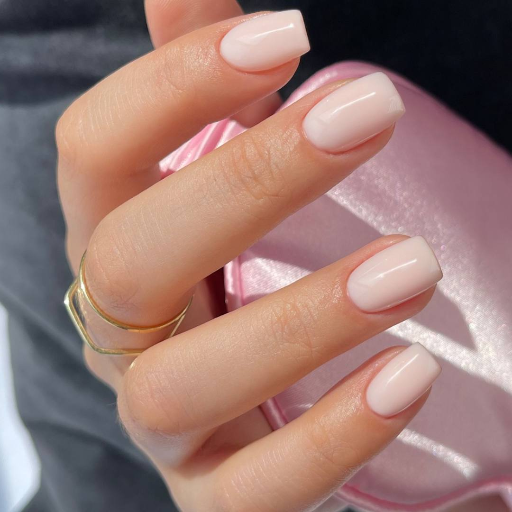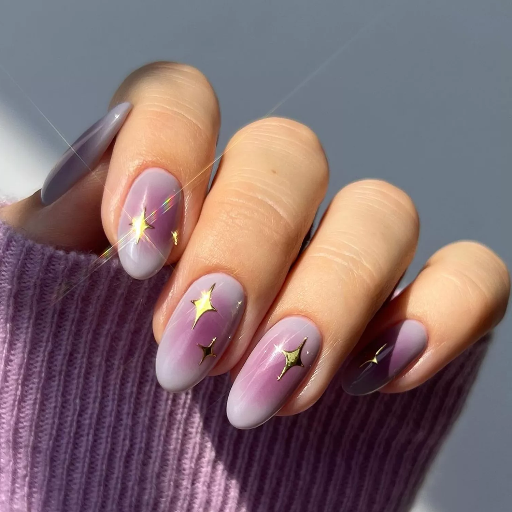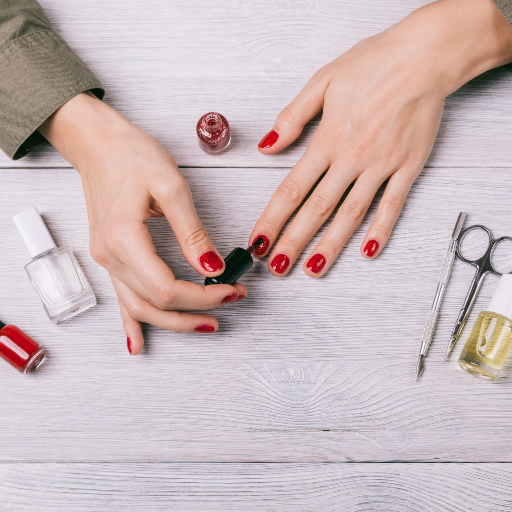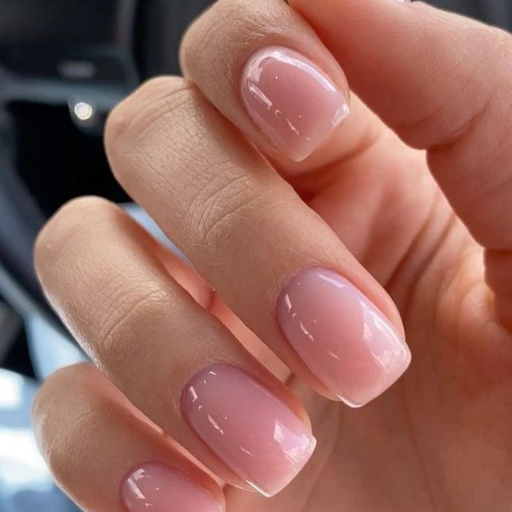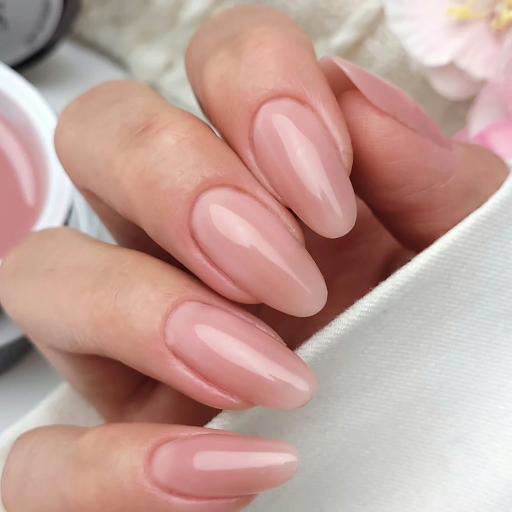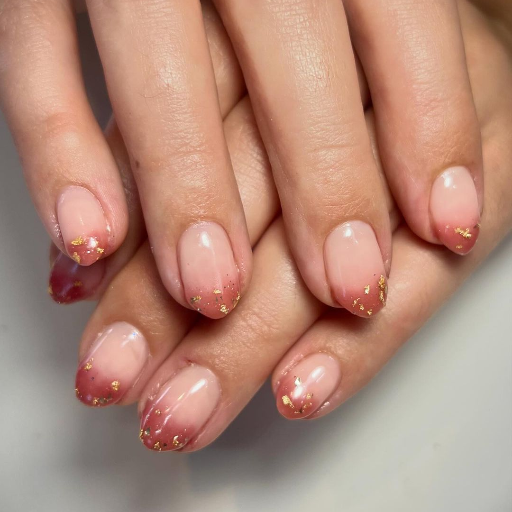The foundation is the ultimate starting point for any makeup routine because it shapes and unifies the whole look. However, it is constantly a difficult step in any beauty routine. Due to the significant number of shades and tones as well as formulations available, finding the right match can indeed be a daunting task. This guide aims to demystify the process by outlining a step-by-step procedure ranging from perfect skin undertone matching to optimal application.
From knowing the undertone of your skin to swatches of the light, this post covers all the basics to ensure that you avoid the common pitfalls of population-mismatched foundations and cake-like finishes. It is advisable to select the right formula according to your skin type for added comfort which should be the aim. Regardless of whether you are new to makeup or an expert, this will enlighten you on how to make informed and decisive choices when it comes to choosing a foundation.
How Do Undertones Affect Your Foundation Shade?
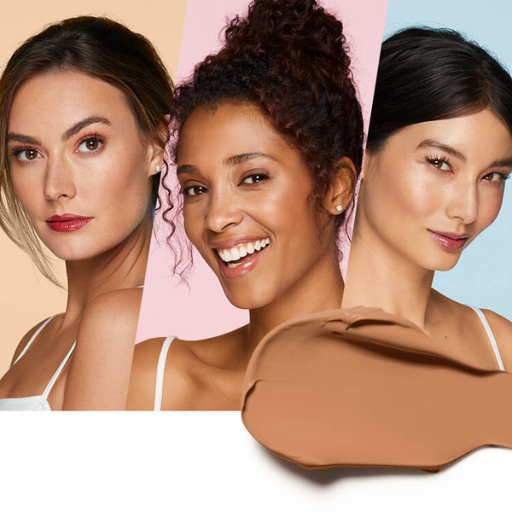
It is impossible to ignore how important undertones are in how a particular foundation shade will suit one’s skin. These are the colors that exist beneath the skin surface and can be classified as warm – (yellow, peach, or golden), cool – (pink, red, or bluish), or neutral which is a combination of the two. Matching your foundation to your undertone will give the most natural and blended effect, averting the chances of your makeup appearing too ashy, orange, or out of place. Again, knowing your undertone will make it possible to select shades intended to blend with your skin tone for the most natural look possible.
Understanding Skin Tone and Undertones
Understanding your skin’s undertone is a crucial step in selecting products that enhance your natural complexion. To determine your undertone, consider the following methods:
- Vein Test: Examine the veins on the underside of your wrist. If they appear blue or purple, you likely have a cool undertone. If they seem greenish, you have a warm undertone. A mix of both indicates a neutral undertone.
- Jewelry Preference: Pay attention to which type of jewelry complements your skin best. Silver jewelry typically flatters cool undertones, whereas gold jewelry enhances warm undertones. Both metals working well could indicate a neutral undertone.
- Reaction to Sun: Observe how your skin reacts to sun exposure. If it burns easily, you may have cool undertones. Skin that tans more easily usually has warm undertones.
- Clothing Colors: Consider the colors of clothing that suit you the best. Cool undertones often look better in blues, purples, and pastel shades, while warm undertones shine in earth tones, reds, and yellows. Neutral undertones usually look balanced in almost all colors.
By using these methods, it becomes simpler to identify your undertone, which forms the foundation for choosing suitable makeup products, clothing, and even hair colors. Accurately determining this characteristic leads to more harmonious choices tailored to your unique complexion.
Identifying Your Undertone: Cool, Warm, or Neutral?
To determine your skin’s undertone you have to begin by checking how your skin reacts to the sun. People with cool undertones tend to burn while warm undertones tan without burning. Those with neutral undertones might display a balance between the two. Another approach suggests checking the veins in the wrist; if the veins are blue or purple the person has cool undertones and if they are green, the person has warm tones, although both colors suggest neutral tones. You should also check how your skin looks in various pieces of jewelry; for instance, silver adornments go well with cool tones while gold is best for warm tones. But if both metals look good on your skin then possibly you possess neutral tones. With these tests so far, you should be able to tell if your skin has warm, cool, or neutral undertones.
Why Undertones Matter in Finding Your Perfect Foundation
Your skin’s undertone is essential in ensuring that the foundation is suitable for your skin without any lines or mismatches. There are cool, warm, and neutral tones for a foundation, and not picking the right one may lead to ashy or overly yellow colors appearing on one’s skin. If one’s foundation is seamlessly matched to their skin it accentuates one’s face through a balanced application of makeup. Today many brands have begun to denote their products according to their undertones, so locating the right one is quite easy. A basis of rebuilding logic has been established, which tackles both the concealer and the problem of low confidence in its wearers.
What is the Best Way to Prep Your Skin for Foundation?

The best way to prep your skin for foundation involves a few essential steps to create a smooth and long-lasting base. Begin with a clean face by thoroughly cleansing to remove dirt, oil, and impurities. Follow this with exfoliation to slough away dead skin cells, ensuring a smooth texture. Next, hydrate your skin with a moisturizer suited to your skin type, as this helps maintain elasticity and prevents the foundation from clinging to dry areas. Applying a primer as the final step creates an even surface and enhances the foundation’s wear throughout the day. Proper prep ensures a flawless finish and maximizes the performance of your makeup.
Prepping Techniques for Every Skin Type
While prepping my skin, I carefully consider the type of product and application technique best suitable for my needs. For oily skin, I am careful to purify the skin using gel-based or foaming cleansers with a follow-up application of lightweight, oil-free moisturizers. If my skin seems dry however, the opposite works for me: I start with a cream-based cleanser, then add a hydrating serum, before a rich moisturizer is applied to the skin to avoid it flaking off. With combination skin, I counterbalance oilier parts such as the T-zone with a mattifying cream while softening the dry areas with enriching moisturizer. In the instance that my skin reacts sensitively, all capsules, creams, and gels must be mild, fragrance-free, and do not contain harsh chemicals, with other soothing agents in the form of aloe Vera or Chamomile used to minimize irritation and inflammation. It is such an individualized approach to skincare prep that enables me to apply makeup on any skin type and have it look fresh even after many hours have passed.
Hydration: The Key to a Flawless Foundation Finish
A smooth foundation can be achieved best when the skin is well hydrated to start with. Hydration aids in the increased elasticity and texture of the skin meaning makeup applies on sinking in and creasing throughout the day. Begin with selecting a moisturizer appropriate to your skin type, i.e. use lightweight gels for oily skin and heavier creams for dry skin to ensure a supple evenly distributed layer. Using a hydrating primer can help secure moisture as well as allow smooth application of the foundation layer. Another way of increasing the moisture levels in the skin is to drink plenty of water which will work in tandem with topical skin care. Well-hydrated skin will help with better makeup application while making the finish look more natural.
How Skin Texture Affects Foundation Application
How the skin appears and how the makeup clan appears to wear can always go hand in hand. If there is rough or uneven textured skin which is more common in enlarged pores and people with even fine lines or dry skin then that is likely to give a patchy as well as a cakey look to the foundation complexion. Smoothening and preparing the skin before applying makeup allows for the makeup to sit properly. Additionally, moisturization of the skin helps keep the pores and skin of the face hydrated by keeping all the dead skin cells away which otherwise would make it rough. Lastly, to incorporate proper familiarity and cohesion, a pore-filling and smoothing layer can be used before the foundation. On another note, certain foundations would suit different types of skin, for instance, a light and hydrate-based foundation is more commonly used by people with textured skin as it combines with the finer lines or fills in any cracked patches. In the end, it is the combination of the skincare regime and the application techniques that blend to give an overall transformed look with a perfect application of foundation.
How to Choose the Right Foundation Shade?

To determine the ideal shade of foundation, it is best to establish the basic tone of your skin first, which can be either warm, cool, or neutral, assessing it by, for example, checking the color of your veins or how your skin reacts to both silver and gold jewelry. As a step further, a suitable foundation may be applied to the jaw or neck to check if the two areas are uniform in tone concerning the entire face. The ideal way of checking the foundation is using natural light since the colors can appear different under various types of artificial illumination. Importantly, if your foundation shade was customized for the summer period, it may be necessary to change it for the winter season because your skin has changed. Lastly, A Full Mocha skin tone incorporating bronze and gold has a high latitude of blend which can deepen an applicant’s real skin color.
Benefits of Using a Foundation Shade Finder
Preferences on complexion instantly change with trends but a foundation shade finder has managed to garner attention over time throughout the world. Additionally, the foundation shade finder guides women by indicating which cosmetic products best suit their skin color. The AI software selects appropriate makeup based on the clientele’s facial characteristics by scanning and storing the image. Thus, one can purchase items that suit them specifically avoiding a cumbersome process. However, care should be taken that the appliance is used with the correct settings for it to potentially function as intended.
Testing Foundation Shades: Swatch and Jawline Techniques
An efficient way to test foundation shades is to first take a few that are closest to your skin and take a few to blend out on the jaws, or your face and neck area, this allows for testing of shades that best suit your skin and its blend, and this test is best. Expect to see some blending but don’t overdo it as very light blending would allow for a soft natural tone to come through, this is recommended to analyze properly. This should be able to redirect you to the collar of the shade that matches. In the case of using the wrist or hand, there is a guarantee that there will be a disparity between the shades.
However, when the jawline technique is utilized, examine the shade’s compatibility on the neck and the remaining skin tone’s properties. If the pigment dimmed or altered in color enhancement, don’t worry it is washed off and settled after 2 minutes – fair ups. To cut the dimming problem consider testing all in one go using window light and all the light bulbs indoors to thoroughly find the correct shade. Such methods will enable you to find the perfect shade that matches your collar perfectly.
Finding Your Perfect Match in Different Lighting Conditions
Correct foundations are those that still look the same after it is subdivided, and this depends on lighting which means the formulators must test the foundation in various situations to get the right one and be able to evaluate it effectively. To begin with, it’s a good idea to test a foundation in natural lighting for the first time since it is always the best to match your skin. Indoors, especially with artificial warm light or fluorescent lights, the color perception is reduced and certain cooling or heating makes some shades seem darker or lighter than they are. As a solution to this problem, try applying the product outdoors by the window and repeating the application indoors but with indoor lighting for better comparison. Moreover, mirrors can be used to look at the product from a variety of angles. Make sure that the application pets every area around the face and neck to enhance the chances of getting a good blend. This procedure helps in getting a foundation with a specific shade that can be easily worn and blended even when you are under different lighting hence the effect is always a good one regardless of the conditions.
What are the Tips for Achieving a Perfect Foundation Match?

- Identify Your Undertone: Determine whether your undertone is warm, cool, or neutral. This can be done by observing the color of your veins—green-tinted veins often indicate a warm undertone, while blue or purple veins suggest a cool undertone.
- Test in Natural Light: Always swatch foundation shades on your face or jawline in natural daylight to ensure an accurate color match.
- Consider Seasonal Changes: Skin tone may shift with the seasons due to sun exposure, so adjust your foundation shade accordingly.
- Blend Thoroughly: Ensure the foundation blends seamlessly from the face to the neck to avoid visible lines or mismatched tones.
- Use Samples When Possible: Test samples over a full day to observe how the product oxidizes and interacts with your skin.
- Leverage Professional Tools: Utilize shade-matching tools or consult with a cosmetic expert for personalized recommendations.
These guidelines are crucial for achieving a flawless, natural finish tailored to your unique skin tone.
Blend Foundation Seamlessly into Your Skin
A flawless look relies heavily on a coherent blending technique, consider starting with moisturizing the skin and applying a primer so that the foundation has an even base. While applying makeup, start by applying foundation and stippling through the center and dab it using a damp makeup sponge, a stippling brush, or your fingers. Such inputs help with getting minimal streaking on the skin as well as even coverage. Focus on the areas around your nose and mouth that crease easily to get better blending and no patches. Blending should always go towards the jawline and the neck; this avoids conspicuous ends and bright lines around the face. It is more precise to work with thin layers because this prevents the makeup from looking too packed and thick. Using these various methods ensures that there is a professional finish to the entire look.
Matching Foundation to Your Skin Type
Selecting the right foundation for your skin type is critical for achieving a flawless finish and maintaining skin health. For oily skin, opt for oil-free or matte foundations, as they help control shine and prevent clogging pores. Look for labels such as “non-comedogenic” to avoid breakouts. For dry skin, choose hydrating or luminous foundations enriched with moisturizing ingredients like hyaluronic acid or glycerin to provide a dewy finish. Those with combination skin should consider dual-action formulas that balance hydration and oil control, or use different products on targeted areas. Sensitive skin types benefit from hypoallergenic, fragrance-free foundations that minimize irritation risk. Testing shades and formulations on your jawline in natural light ensures an accurate match and compatibility with your skin type. Prioritize products with SPF for everyday use to add an extra layer of protection to your skincare routine.
Tips from Professional Makeup Artists
- Prepare Your Skin: Professional makeup artists emphasize the importance of a clean and moisturized base before applying any foundation. Use a primer suited for your skin type to smooth texture and increase longevity.
- Understand Your Undertone: Knowing whether your undertone is warm, cool, or neutral is vital for selecting the right foundation shade. A simple test is to check the color of your veins; green suggests warm undertones, while blue indicates cool undertones.
- Build Coverage Gradually: Start with a light layer of foundation and build coverage only where needed to avoid a cakey or heavy appearance. Use brushes or sponges to blend seamlessly.
- Set Strategically: Apply a translucent setting powder to areas prone to oil, such as the T-zone, while leaving other areas untouched for a natural look. For dry skin, setting sprays can lock in makeup without adding extra dryness.
- Adapt to Lighting: Always check your makeup in natural light to ensure even application and true color matching. For events, consider how lighting conditions (e.g., bright or dim light) may impact your look.
- Refresh Throughout the Day: Blotting papers or a light dusting of powder can help maintain a flawless finish by controlling excess shine without disrupting your makeup.
How Does Foundation Performance Vary on Mature Skin?

The Application of foundation might also be impacted by the differences in the overall texture, elasticity, and moisture of mature skin, which most often includes fine lines, wrinkles, and dry patches that need to be taken care of before makeup application, otherwise, foundation is most likely to either settle or look patchy. The ideal finish that can give a brightening effect to the complexion without emphasizing texture would be lighter and hydrating formulas. Furthermore, incorporating a smoothing or hydrating primer aids in improving both application and wear. And instead of a heavy matte look one should prefer a dewy or satin finish which helps achieve a youthful appearance.
Understanding Coverage Needs for Mature Skin
Mature skin coverage requirements can greatly vary from one person to another depending on the skin type, skin conditions, and the coverage finish that they desire. For people who have age spots and/or discolored skin, medium to full coverage foundations are used to tone the skin; however, it must be blended in well to ensure it does not look caked on. Light-weight forms that are also buildable are most suited for these areas since they help achieve the necessary coverage without the foundation settling into fine lines and wrinkles. Sheer or light coverage forms with luminous finish concealers are good for mature skin which has a few imperfections and has more good skin since it adds to that natural glow. Layering foundation and good color-correcting products with a concealer to specific sections of the face can reduce the number of layers needed to be worn which helps in giving a clean look and helps the skin in easily breathing.
Adjusting Foundation Techniques for Aging Complexion
The first step in this delicate process of achieving a flawless look is to pick the right products for the skin and to learn the skill of precisely applying the makeup. To commence, prepping is important for the skin, as it calls for hydration with a rich moisturizer or primer to minimize the existence of fine lines and/or texture when laying some makeup. The aim is to pick lightweight, hydrating, natural, or dewy finishes and to apply the foundation carefully on the skin rather than using heavy/drying foundations Apply the foundations on the skin rarely and first with a thin coat, slowly building up everywhere necessary. The use of tools such as these is also recommended: a damp makeup sponge, as this ensures a skin-like application of the products rather than a patchy application of the makeup. Additionally, it is recommended to avoid applying thick layers around active wrinkle areas (which move while one smiles or speaks) rather than apply concealers instead of foundation. Such strategic placement prevents dryness from showing through or emphasizing texture. To set a youthful look, translucent powder can be used which reduces shine. Following this up with a light mist of setting spray ensures the look of youth is maintained.
Finding the Right Foundation for Mature Skin Types
Using an appropriate foundation for women with mature skin requires looking for a formula that offers hydration, suppleness, and blending into the skin. In such cases, it is suggested to look for foundations labeled hydrating or luminous as they may contain hyaluronic acid, peptides, or vitamin E which assist with moisture low loss and elasticity of the skin. Commonly, liquid or serum foundations are better suited for mature skin than powders or thick creams as they settle into fine lines and highlight the texture. Try to keep in mind the undertones of a shade and the best way to check if the foundation is a suitable match is by testing it out in natural sunlight instead of artificial lighting. It is additionally recommended to use foundations that offer light to medium coverage since they modify the tone of the skin without thickening the area to the extent of making it look like a mask. Most professionals also recommend a formula with SPF as well since it would add to the defense wearing sunscreen does against aging due to UV rays. In essence, focusing on skin-focused foundations would result in a smoother feel while being applied to the skin and radiant skin for the entire day.
References
Frequently Asked Questions (FAQ)
Q: How do I find my perfect foundation color match?
A: To find your perfect foundation color match, start by understanding the undertone of your skin. Determine if you have cool, warm, or neutral undertones by checking the color of your veins. Use a foundation finder tool or test shades in-store by applying a small amount on your jawline and checking in natural light. The right shade will blend seamlessly into your skin.
Q: What is the best way to shade match my foundation?
A: The best way to shade match your foundation is to test it on your jawline or the side of your face. This helps ensure the foundation color blends well with your neck and face. Always check the shade in natural light to see how it appears in different lighting conditions.
Q: How can I tell if I have chosen the right shade of foundation?
A: You can tell if you have chosen the right shade of foundation if it blends seamlessly into your skin without leaving a noticeable line. It should not make your face look ashy or overly warm. Also, test the shade on different areas of your face to ensure a consistent match.
Q: Should I use natural light when testing foundation colors?
A: Yes, using natural light is crucial when testing foundation colors. Artificial lighting can alter the appearance of the shade, making it look different than it will in natural settings. Always step outside or near a window to check the foundation shade match.
Q: Can the texture and tone of my skin affect my foundation color choice?
A: Yes, the texture and tone of your skin can affect your foundation color choice. Oily skin types may prefer matte finishes, while dry skin benefits from hydrating, liquid foundations. Your skin tone refers to the surface color, while undertones can be cool, warm, or neutral, affecting which shades will look most natural.
Q: How do I find a foundation shade if my skin tone changes with the seasons?
A: If your skin tone changes with the seasons, consider having two shades of foundation: one for your lighter, winter skin tone and one for your darker, summer skin tone. You can also mix the two shades to match your current skin tone as it transitions.
Q: What should I do if my foundation settles into fine lines?
A: If your foundation settles into fine lines, try using a primer to create a smooth base. Choose a lightweight, hydrating foundation to avoid accentuating lines. Applying foundation with a damp sponge can also help achieve a more natural finish.
Q: How can I find my perfect foundation match if I have neutral undertones?
A: If you have neutral undertones, look for foundation shades that are balanced and not too yellow or pink. Neutral undertones can usually wear a wider range of shades, so testing different options in natural light is key to finding your perfect foundation match.
Q: Can I use a virtual makeup tool to find my foundation shade?
A: Yes, many brands offer virtual makeup tools to help you find your foundation shade. These tools use your uploaded photo to recommend shades that match your skin tone and undertone, providing a convenient way to find your perfect foundation match online.
Q: What makeup tips can help in choosing the right shade of foundation?
A: To choose the right shade of foundation, determine your skin tone and undertone, test multiple shades on your jawline, and check the match in natural light. Consider the coverage of the foundation you want and select a formulation that suits your skin type, like a liquid foundation for dry skin or powder for oily skin.


